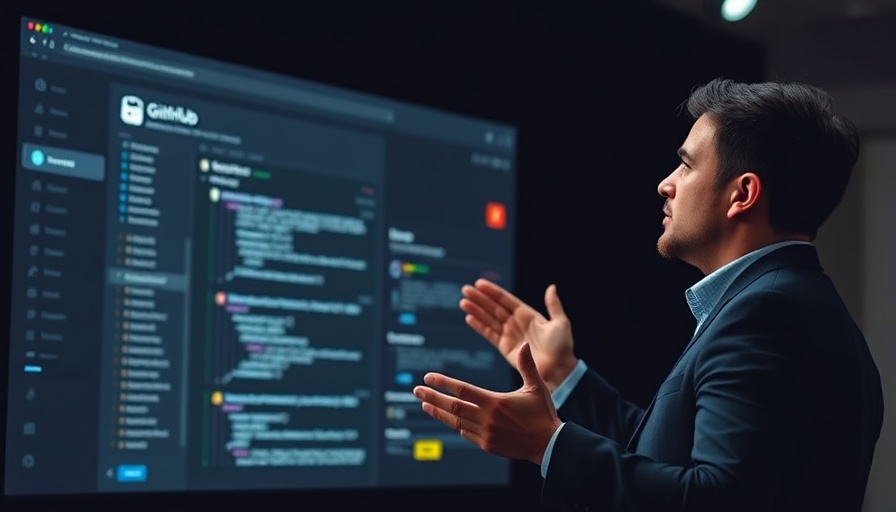
Revolutionizing Code: The Autonomous Future of GitHub Copilot
GitHub Copilot just took a significant leap from being a supportive coding companion to becoming a fully autonomous agent in software development. This bold transformation allows developers to assign issues directly to GitHub's C-Pilot Agent, which autonomously tests, debugs, fixes, and submits pull requests without human intervention. This shift marks a pivotal moment in how developers will interact with code.
In 'GitHub Copilot Turns Revolutionary – Coding & Testing Fully Automated!', the discussion dives into the transition from a supportive coding tool to an autonomous coding agent, exploring key insights that sparked deeper analysis on our end.
How the C-Pilot Agent Changes the Game
Initially, Copilot served as a tool to autocomplete code within an Integrated Development Environment (IDE). However, with the introduction of the C-Pilot Agent at Build 2025, the narrative has changed. Developers can now assign routine tasks to the AI as they would to a human team member. The agent engages asynchronously, reducing the need for constant supervision and allowing developers to concentrate on strategic aspects of their projects.
This substantial change means that if a developer designates five issues to Copilot, each task can be handled simultaneously while they work on other high-value projects. As GitHub's Chief Product Officer, Mario Rodriguez, noted, “Before your productivity was limited by the fact that you had to be there pressing every keystroke; now you could be doing one task, and Copilot could be executing five others.”
A Deeper Look at Functionality
So, what does this integration entail? Once an issue is assigned, the Copilot Agent automatically activates a GitHub actions workflow, setting up a virtual machine and cloning the repository. Employing retrieval-augmented generation (RA), it compiles contextual information from the repository and associated documentation, enabling it to modify code accurately. This process mirrors how a human developer would resolve issues, providing a degree of transparency through logged reasoning and decision-making.
Responding to Market Demands
This shift towards autonomy isn’t merely an upgrade; it’s a strategic response to the competitive landscape of AI development tools. Other platforms like ChatGPT and Google’s Code Assist already offer advanced features that address the unique needs of developers. As such, GitHub is keenly focused on maintaining relevance within a rapidly evolving market. By enhancing the Copilot tool, GitHub strengthens its position in a space where AI increasingly reshapes coding practices.
Asynchronous Development: A Paradigm Shift
The emergence of the C-Pilot Agent signifies a broader shift towards asynchronous development workflows. In traditional setups, developers move through tasks sequentially, but with the autonomy provided by Copilot, tasks can be tackled in parallel. This approach facilitates a more efficient coding process, minimizing bottlenecks from context switching or repetitive fixes.
This development is sure to appeal to R&D directors and innovation executives who are looking for ways to optimize their teams and maximize productivity. As these tools evolve, they present a significant opportunity for tech investors to back a transformative wave of software engineering.
Unlocking Potential Through Enhanced Collaboration
The potential of the C-Pilot Agent extends beyond individual productivity; it fosters improved collaboration. By automating routine tasks, the AI allows human developers to focus on higher-level strategic thinking that requires creativity and insight. In this collaborative landscape, AI is not a replacement for human effort; rather, it augments the capabilities of developers, creating a synergistic relationship that optimizes project outcomes.
As we shift into this new era of software development, staying informed about advancements in autonomous AI tools will be crucial. The evolution of Copilot isn’t just a technological upgrade; it’s a fundamental change in how we view the relationship between humans and artificial intelligence in the coding sphere.
 Add Row
Add Row  Add
Add 




Write A Comment